Sex differences in inflammatory cytokine levels following synthetic cathinone self-administration in rats
- PMID: 34742947
- PMCID: PMC8748414
- DOI: 10.1016/j.neuro.2021.11.002
Sex differences in inflammatory cytokine levels following synthetic cathinone self-administration in rats
Abstract
Synthetic cathinones are used as stimulants of abuse. Many abused drugs, including stimulants, activate nuclear factor-κB (NF-κB) transcription leading to increases in NF-κB-regulated pro-inflammatory cytokines, and the level of inflammation appears to correlate with length of abuse. The purpose of this study was to measure the profile of IL-1α, IL-1β, IL-6, CCL2 and TNF-α in brain and plasma to examine if drug exposure alters inflammatory markers. Male and female Sprague-Dawley rats were trained to self-administer α-pyrrolidinopentiophenone (α-PVP) (0.1 mg/kg/infusion), 4-methylmethcathinone (4MMC) (0.5 mg/kg/infusion), or saline through autoshaping, and then self-administered for 21 days during 1 h (short access; ShA) or 6 h (long access; LgA) sessions. Separate rats were assigned to a naïve control group. Cytokine levels were examined in amygdala, hippocampus, hypothalamus, prefrontal cortex, striatum, thalamus, and plasma. Rats acquired synthetic cathinone self-administration, and there were no sex differences in drug intake. Synthetic cathinone self-administration produced sex differences in IL-1α, IL-1β, IL-6, CCL2 and TNF-α levels. There were widespread increases in inflammatory cytokines in the brains of male rats compared to females, particularly for 4MMC, whereas females were more likely to show increased inflammatory cytokines in plasma compared to saline groups than males. Furthermore, these sex differences in cytokine levels were more common after LgA access to synthetic cathinones than ShA. These results suggest that synthetic cathinone use likely produces sex-selective patterns of neuroinflammation during the transition from use to abuse. Consequently, treatment need may differ depending on the progression of synthetic cathinone abuse and based on sex.
Keywords: Cytokine; Mephedrone; Neuroimmune; Neuroinflammation; Self-administration; α-PVP.
Copyright © 2021 Elsevier B.V. All rights reserved.
Conflict of interest statement
Declaration of interests
The authors declare that they have no known competing financial interests or personal relationships that could have appeared to influence the work reported in this paper.
Figures

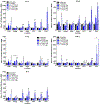
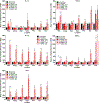
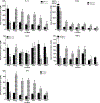
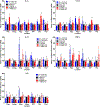
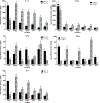
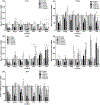
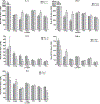
References
-
- Aarde SM, Creehan KM, Vandewater SA, Dickerson TJ, Taffe MA, 2015. In vivo potency and efficacy of the novel cathinone alpha-pyrrolidinopentiophenone and 3,4-methylenedioxypyrovalerone: self-administration and locomotor stimulation in male rats. Psychopharmacology (Berl.) 232(16), 3045–3055. 10.1007/s00213-015-3944-8. - DOI - PMC - PubMed
-
- Anneken JH, Angoa-Perez M, Kuhn DM, 2015. 3,4-Methylenedioxypyrovalerone prevents while methylone enhances methamphetamine-induced damage to dopamine nerve endings: beta-ketoamphetamine modulation of neurotoxicity by the dopamine transporter. J. Neurochem. 133(2), 211–222. 10.1111/jnc.13048. - DOI - PMC - PubMed
-
- Araos P, Pedraz M, Serrano A, Lucena M, Barrios V, Garcia-Marchena N, Campos-Cloute R, Ruiz JJ, Romero P, Suarez J, Baixeras E, de la Torre R, Montesinos J, Guerri C, Rodriguez-Arias M, Minarro J, Martinez-Riera R, Torrens M, Chowen JA, Argente J, Mason BJ, Pavon FJ, Rodriguez de Fonseca F, 2015. Plasma profile of proinflammatory cytokines and chemokines in cocaine users under outpatient treatment: influence of cocaine symptom severity and psychiatric co-morbidity. Addict. Biol. 20(4), 756–772. 10.1111/adb.12156. - DOI - PubMed
Publication types
MeSH terms
Substances
Grants and funding
LinkOut - more resources
Full Text Sources

